Physical Address
304 North Cardinal St.
Dorchester Center, MA 02124
Abdominoperineal resection (APR) is the operation of choice for low-lying rectal cancers, as well as for many recurrent rectal cancers, and as salvage therapy for anal cancers. In very select circumstances, APR may also be appropriate for benign disease, such as in patients with severe refractory anorectal Crohn disease. Finally, APR may be used in both benign and malignant disease in patients whose underlying disease would otherwise allow restoration of continuity but are plagued by problems with continence. The procedure involves the complete removal of the anus (including the sphincter complex), rectum, and distal colon using both anterior abdominal and perineal incisions, resulting in a permanent colostomy. Both open and laparoscopic approaches are commonly used, although there has been some controversy regarding the oncologic equivalence of minimally invasive approaches for locally advanced rectal cancer, and this is an area of active investigation.
Since originally popularized by Miles more than 100 years ago, APR has undergone significant evolution in both application and technique to develop into the modern operation we describe here. Overall, the fundamental principle of the APR is to attain locoregional control of disease through complete tumor resection with negative circumferential margins (CFMs). As the vast majority of regional disease spread is contained within the mesorectum, complete resection of the rectum and mesorectum as a single unit is the goal of curative resection. Thus total mesorectal excision (TME) with autonomic nerve preservation has become an important cornerstone of rectal cancer surgery.
Perhaps too often APR is thought of as an operation of last resort to be applied only when there are no sphincter-preserving options available. This has led to trends favoring more aggressive and arguably overzealous attempts for sphincter preservation. Although the conservation of intestinal continuity is clearly preferable, it is only justifiable if based on sound oncologic principles. It has been suggested that tumors less than 5 cm from the anal verge may represent a more biologically aggressive disease than those of the more proximal rectum. Low rectal tumors have been shown to carry a lower 5-year survival rate compared with midrectal tumors, as well as have a higher incidence of mesorectal and lateral lymph node involvement and higher rate of local recurrence. In addition, more aggressive pathologic findings, such as poor differentiation and neurovascular invasion have been demonstrated in low rectal cancers. Therefore APR should not be thought of as simply a procedure of last resort but rather the appropriate and necessary surgery for select distal rectal cancers and conditions that merit its use.
Clearly not all low rectal cancers are equal, and a tailored surgical approach is necessary to achieve the appropriate oncologic resection while simultaneously limiting patient morbidity. APR is first and foremost a procedure that is focused on curative resection. This is especially important at the level of the levator ani, where separation of the mesorectum from the pelvic floor can be particularly challenging. Imperfect technique at this level can occasionally lead to tumor perforation, positive resection margins, and higher rates of local recurrence. This can be demonstrated on magnetic resonance imaging (MRI) as a threatened margin. As a result, many have questioned the extent of perineal (i.e., muscle) resection required at the level of the levators for optimal oncologic outcomes.
In general, the surgeon's options for perineal dissection during APR include (1) the “traditional,” or so-called standard APR, in which the resection margin is “coned in” at the level of the levators, thus preserving pelvic floor structure without compromising the margins ( Fig. 169.1 ); or (2) the extended or extralevator APR (ELAPE) or cylindrical APR, wherein the abdominal mobilization of the mesorectum is stopped at the lateral margins of the pelvic floor and wide transection of the levators is performed, resulting in a cylinder of tissue around the tumor ( Fig. 169.2 ). This debate is often referred to as the waist versus cylinder resection due to the appearance of the resected specimen ( Fig. 169.3 ). Some have advocated for more liberal application of ELAPE, arguing the technique results in lower rates of positive resection margins and decreased incidence of tumor perforation. However, there are several problems with this approach preventing its more widespread application. The more extensive levator resection translates to higher rates of perineal wound complications, and as the entire levator plate is removed with this technique, tissue transfer or mesh reconstruction is almost mandatory ( Fig. 169.4 ). Moreover, there should theoretically be no advantage to wide excision of the levators where there is no risk of direct tumor involvement using a standard approach. Indeed, when the literature is looked at on the whole, there does not appear to be significantly improved oncologic outcomes when routine ELAPE is compared with tumor-specific excision of the levators ( Table 169.1 ). Thus we recommend limiting the use of such a technique to distal tumors with circumferential invasion through the external sphincter or involving the levators, especially when the margin is threatened on MRI. For noncircumferential invasion, it seems reasonable to avoid coning in on the levators in the region where the tumor is located and sparing extensive resection of the levators where appropriate. This results in an asymmetric specimen with the entire tumor covered in an R0 resection. However, compromising oncologic principles and resulting in a positive CFM for any lesion, especially for the primary purpose of leaving levator muscle for closure, is unacceptable.
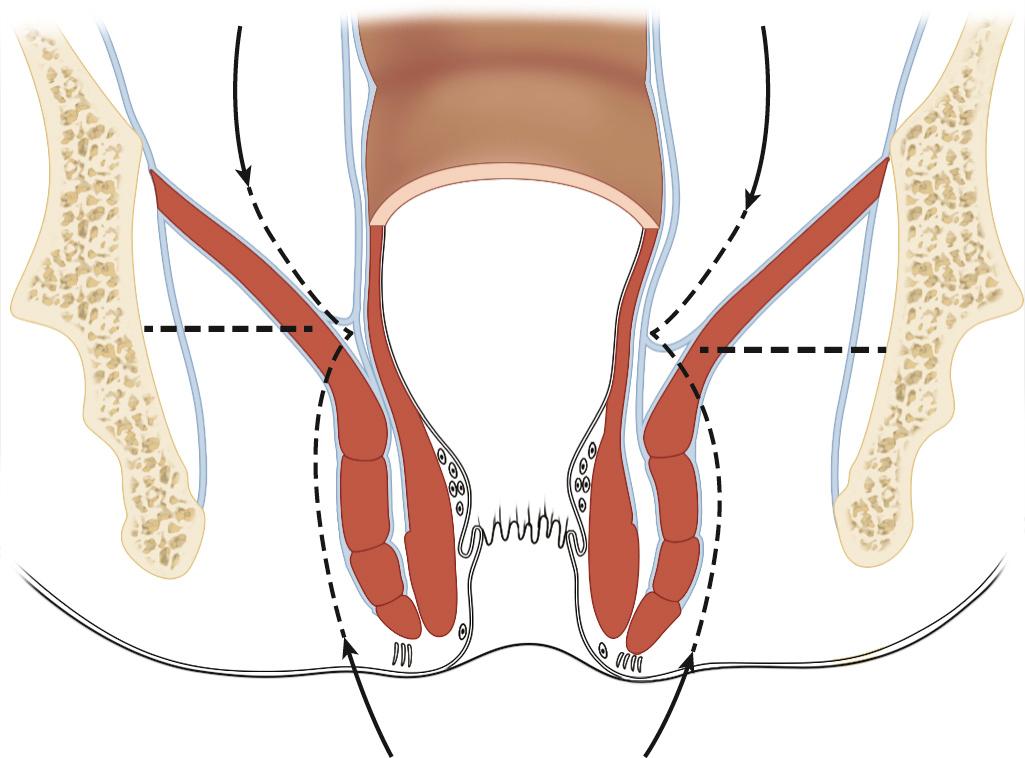
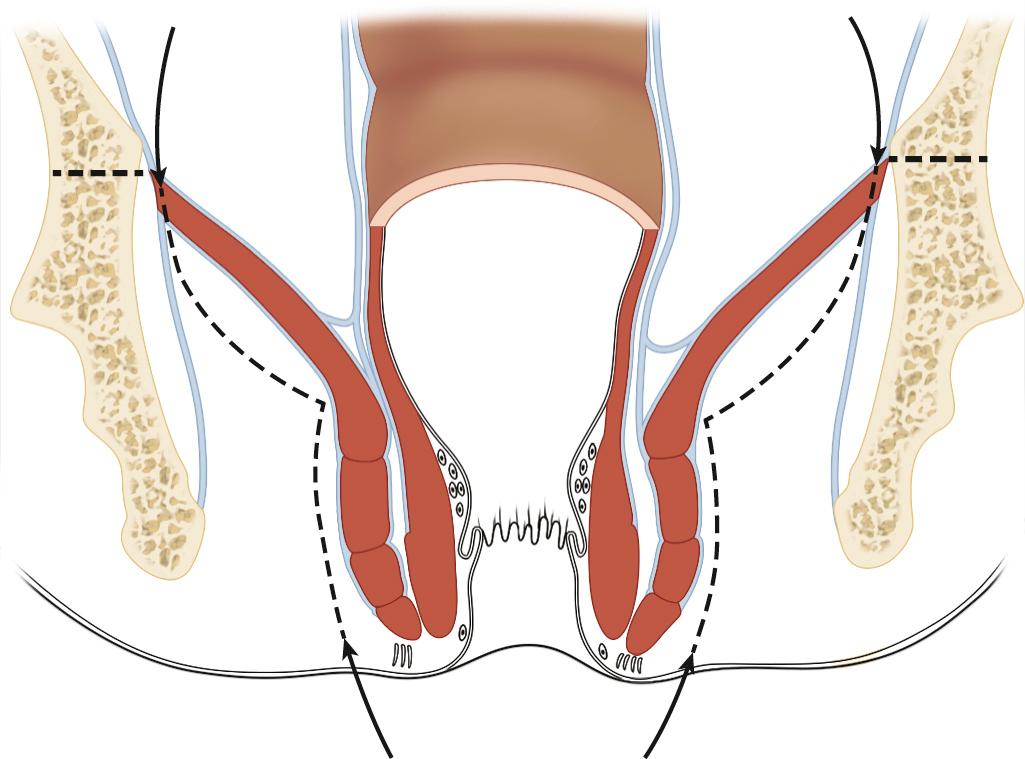
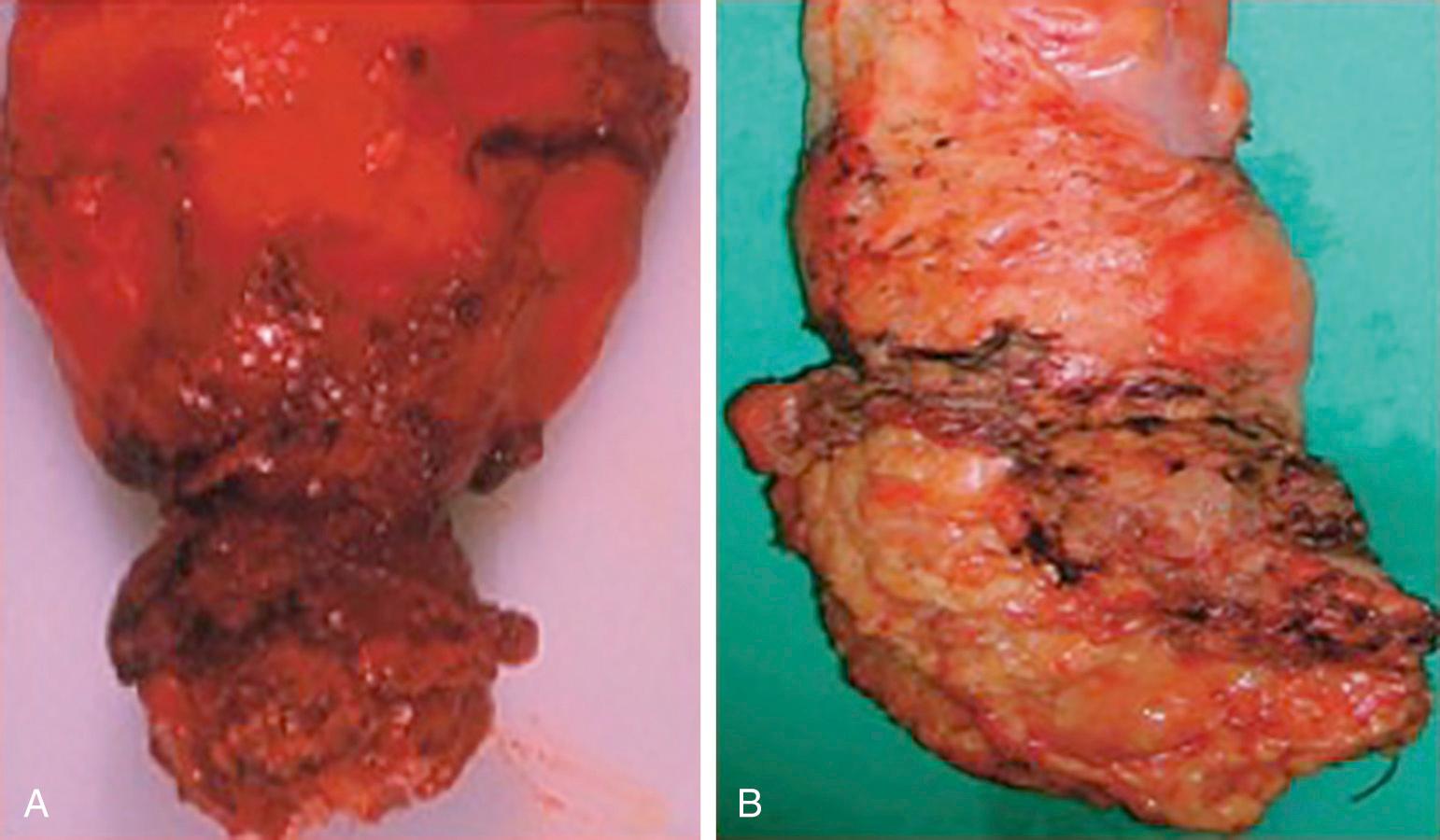
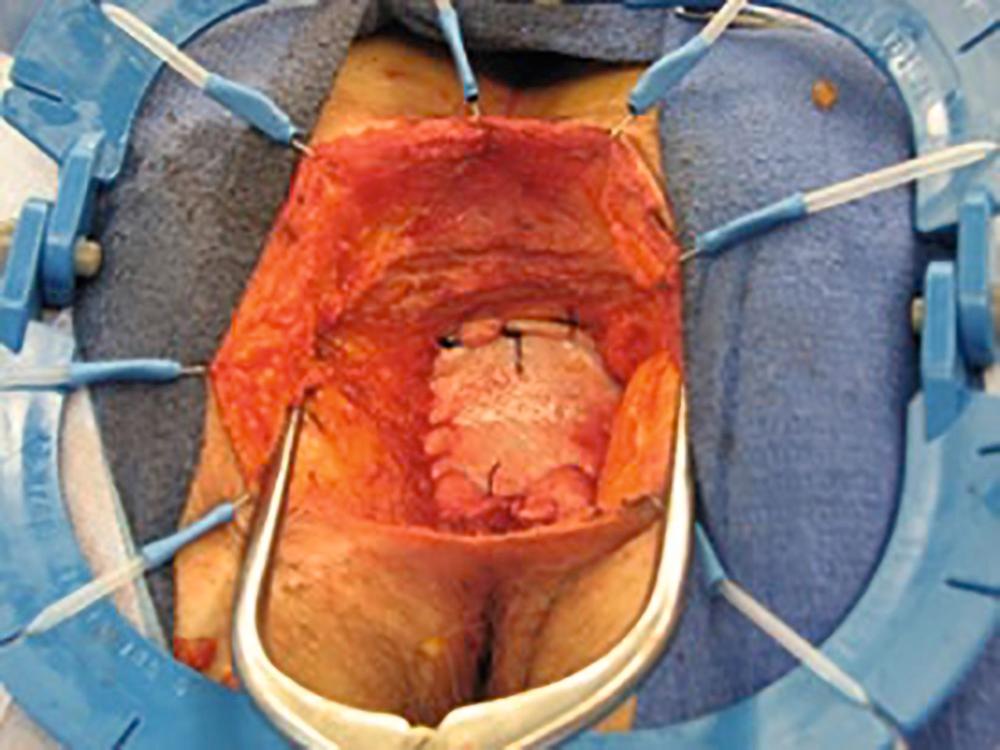
| Author | Year | Study Type | Number of Patients | Local Recurrence | Overall Survival | Tumor Perforation |
|---|---|---|---|---|---|---|
| Han | 2012 | Randomized control trial | 67 | Decreased with ELAPE [2.8% vs. 18.8%; P = .048] | NS | NS |
| Krishna | 2013 | Systemic review | 8 studies | NS | NS | NS |
| Prytz | 2015 | Prospective observational | 1397 | Increased with ELAPE [OR = 4.91] | NS | Increased with ELAPE [OR = 8.90] |
| Zhou | 2015 | Meta-analysis | 7 studies | NS | — | NS |
| Shen | 2015 | Prospective observational | 69 | Decreased with ELAPE [0% vs. 15.2%; P = .034] | NS | — |
In select circumstances, a more radical ischioanal resection may be required, such as when there is ischioanal involvement of the tumor or when there are significant associated fistulas or abscesses ( Fig. 169.5 ). Alternatively, when APR is done for benign disease, or when performed due to preexisting fecal incontinence in patients with upper rectal tumors, an intersphincteric perineal dissection may be more appropriate ( Fig. 169.6 ). Overall, the surgeon must balance the oncologic need for a particular approach with resultant morbidity, mortality, and functional outcome in each individual patient. There simply is no “one size fits all” approach to treating these challenging distal lesions.
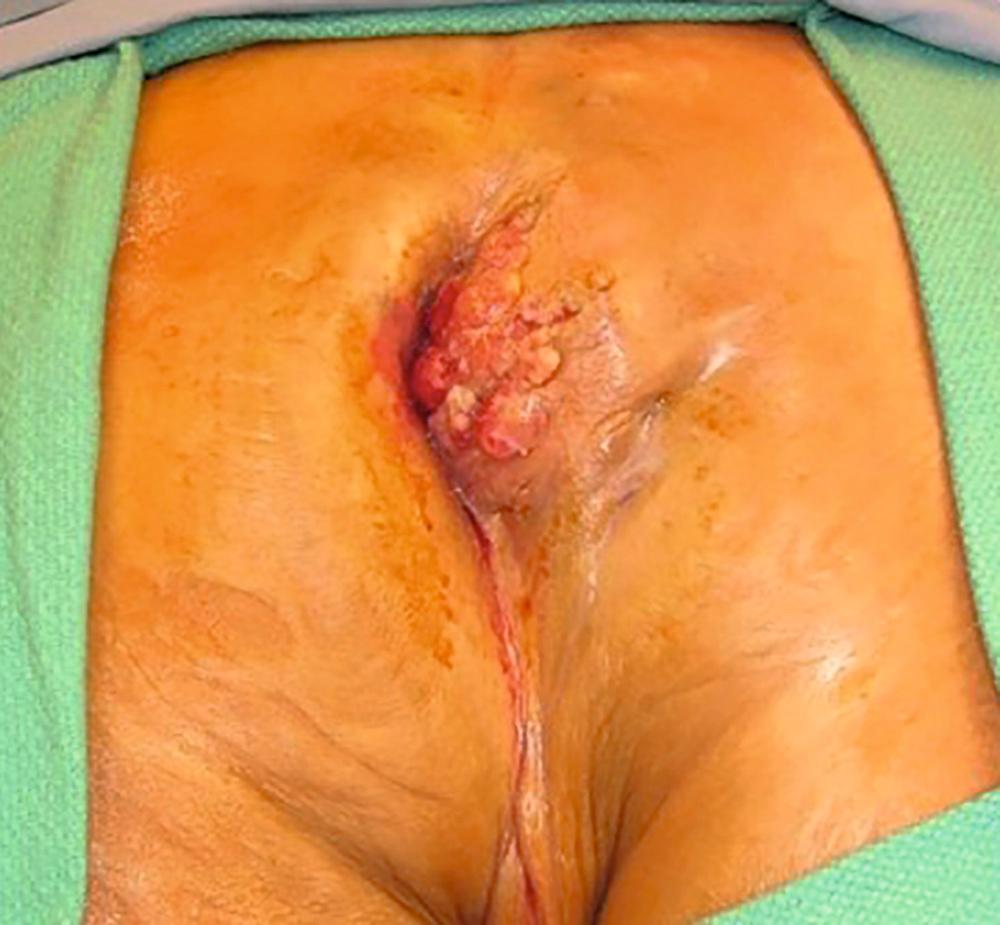
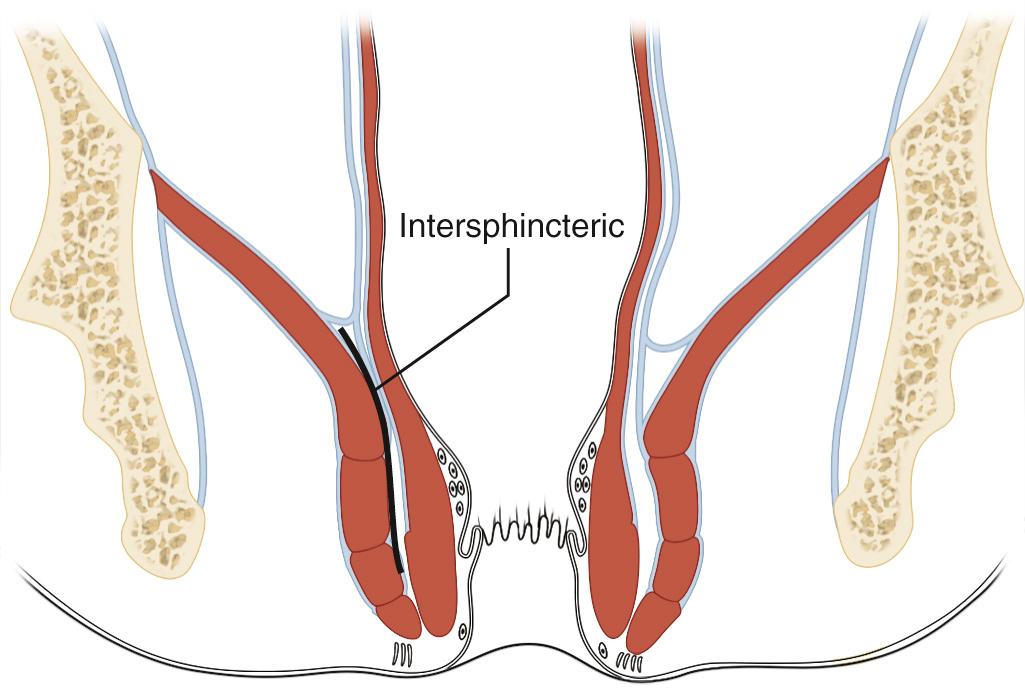
The bony pelvis is made up of the sacrum, ileum, ischium, and pubis. The pelvic brim marks the transition from the greater (false) and lesser (true) pelvis. A plane through the sacral promontory, arcuate and pectineal lines, and the upper margin of the pubic symphysis delineates the level of the pelvic brim. The rectum and anal canal lie within the bony pelvis and form the most distal portion of the large intestine. The beginning of the rectum can be marked by the point at which the taeniae coli bands splay to form the outer longitudinal muscle layer. Peritoneum covers the upper two-thirds of the rectum anteriorly but only one-third posteriolaterally, thus leaving the lower one-third of the rectum with no peritoneal covering. Rather, it is enveloped in the endopelvic fascia. Anteriorly in males, Denonvilliers fascia separates the rectum from the prostate and seminal vesicles. This structure is analogous to the rectovaginal fascia in females. Posteriorly, there is a strong layer of fascia known as Waldeyer fascia, which connects the rectum to the anterior sacrum at about the level of S4 ( Fig. 169.7 ).
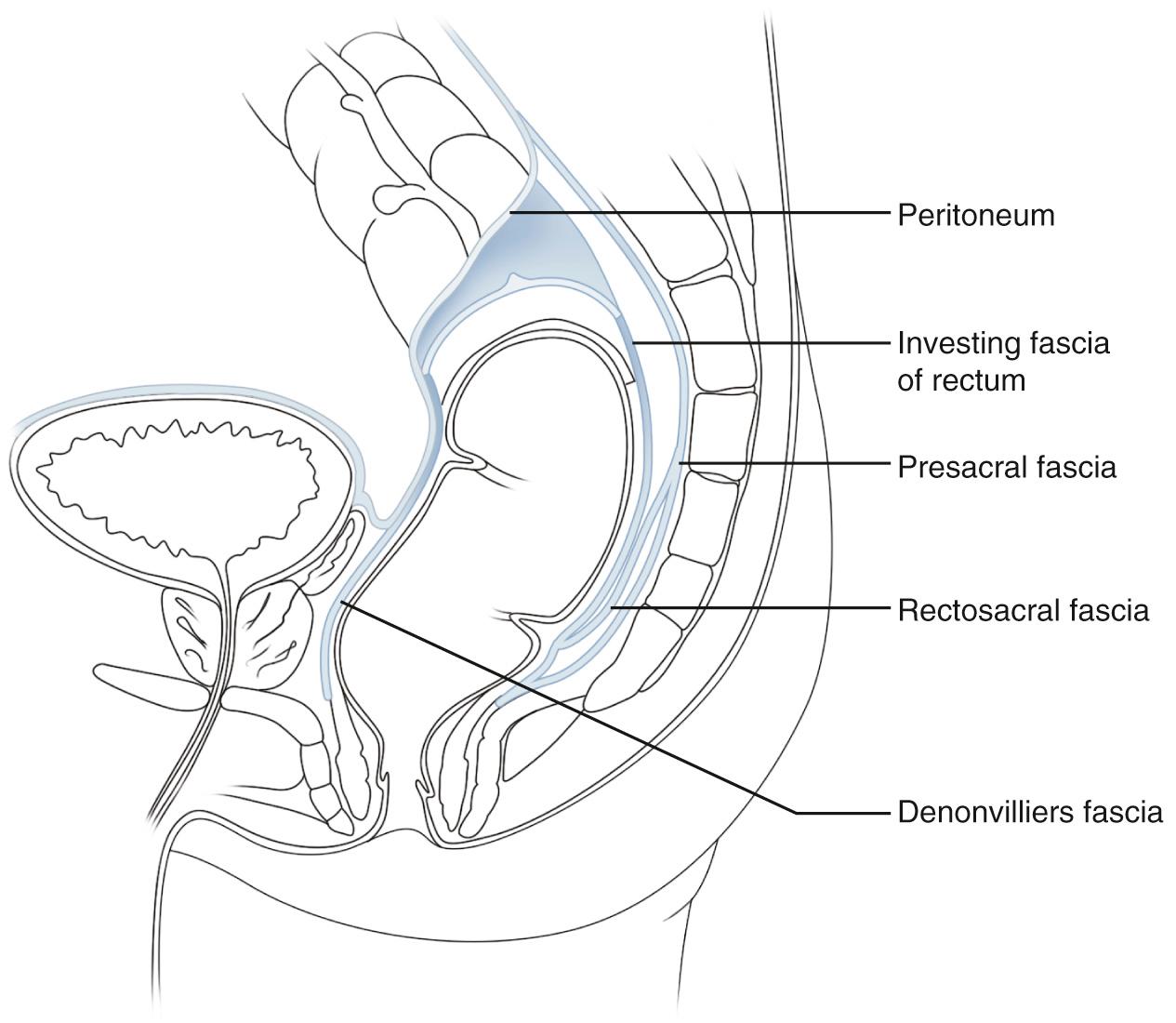
Composed of a funnel-shaped sling of fascia and muscle (levator ani), the pelvic diaphragm forms the inferior border of the abdominopelvic cavity. It extends from the pubic symphysis to the coccyx and to the bilateral pelvic sidewalls. The muscles of the pelvic floor are organized into superficial and deep layers. The superficial muscle layers include the external anal sphincter, perineal body, and transverse perinei muscles. The deep pelvic floor muscles consist of individual muscles that comprise the levator ani: the ileococcygeus, pubococcygeus, and puborectalis ( Fig. 169.8 ). The puborectalis forms the superior external anal sphincter and marks the top of the anorectal ring. The anorectal ring encompasses the internal anal sphincter and is formed by the levator ani muscles proximally and the superficial external anal sphincters more distally.
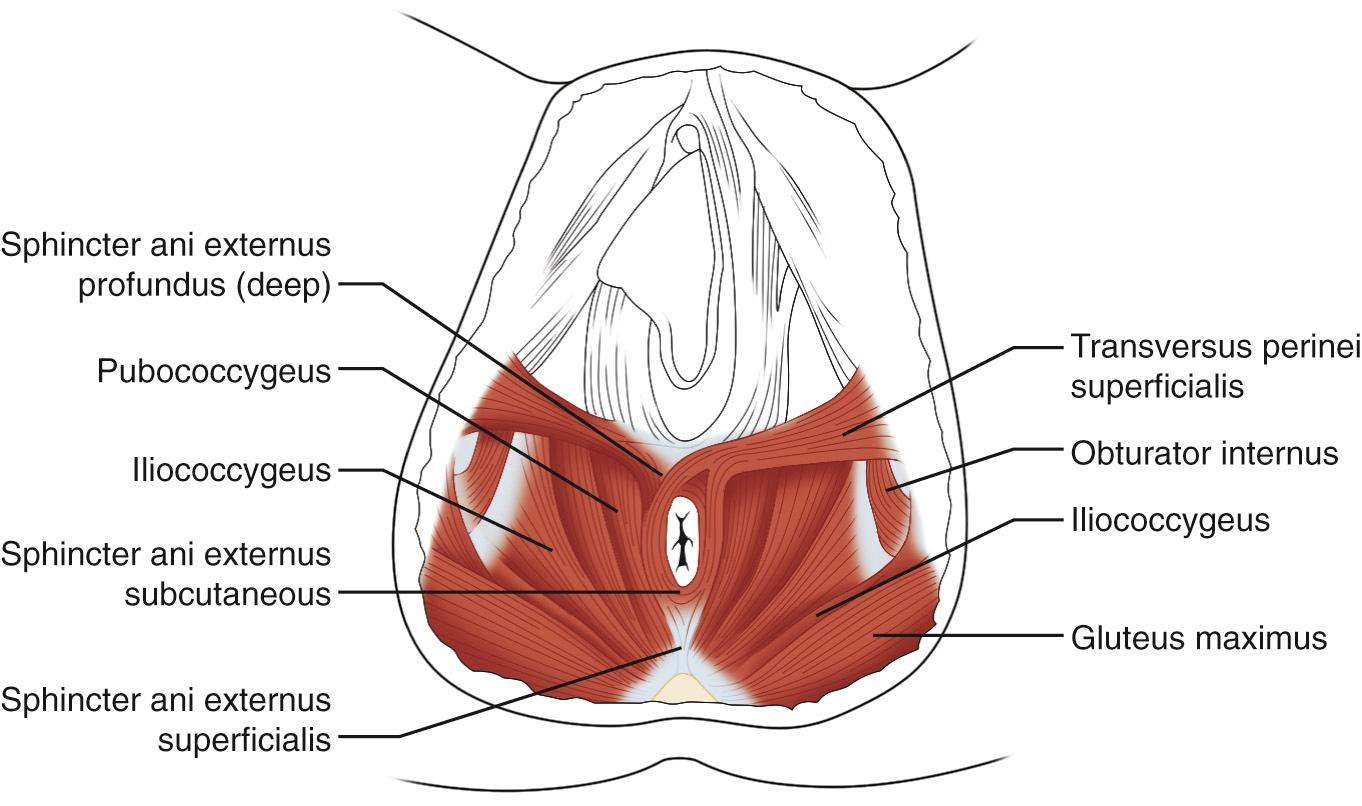
Become a Clinical Tree membership for Full access and enjoy Unlimited articles
If you are a member. Log in here